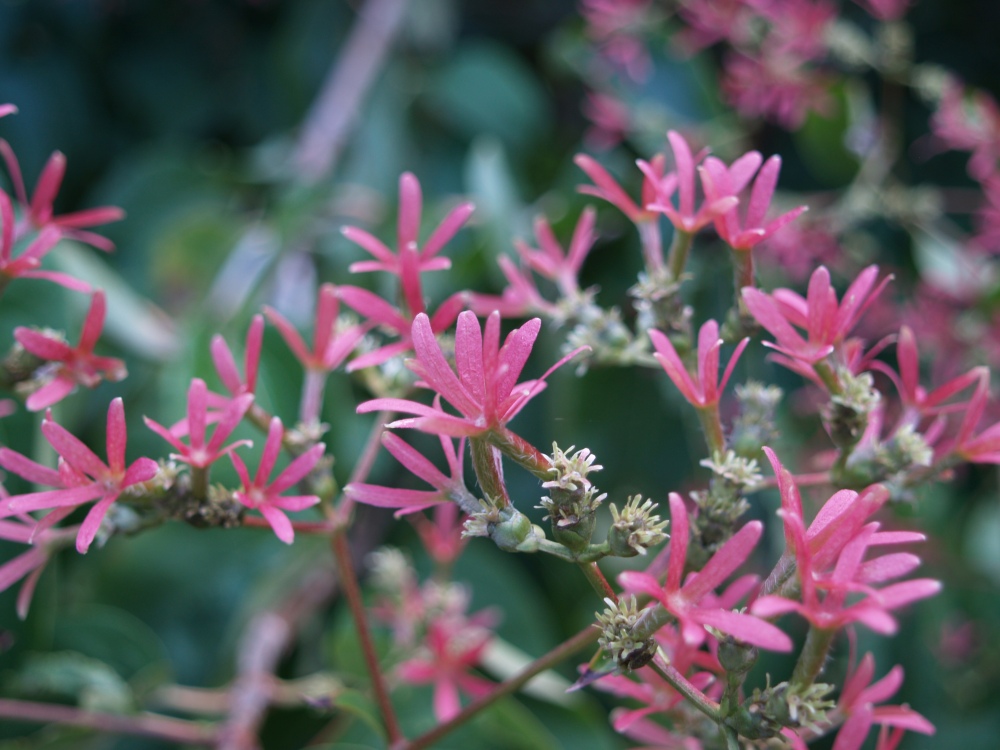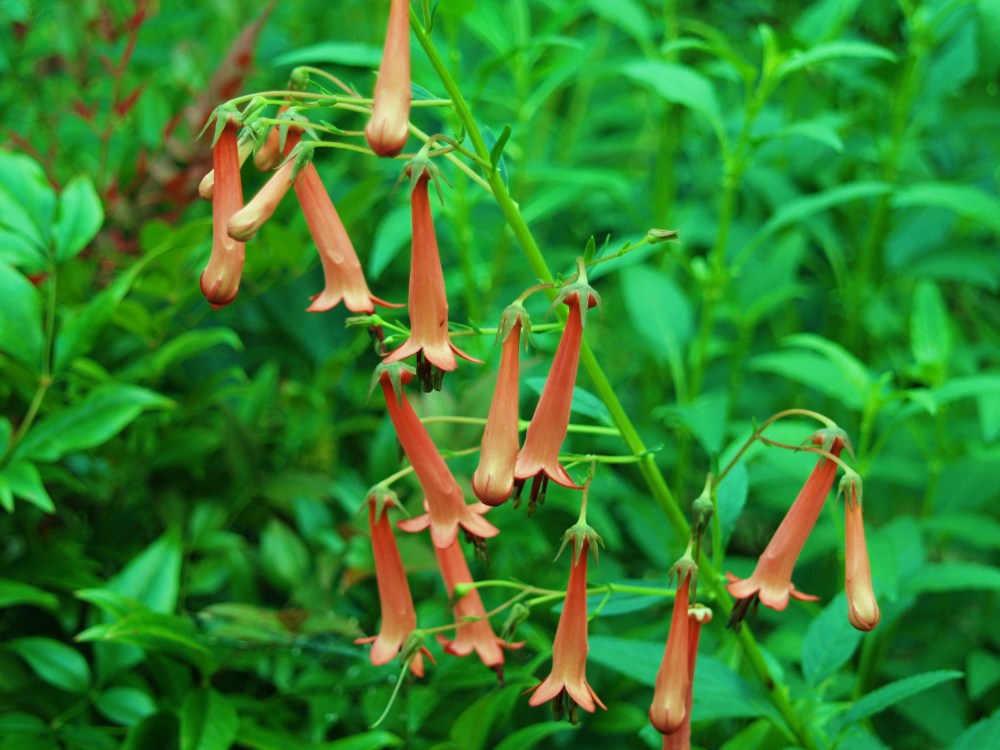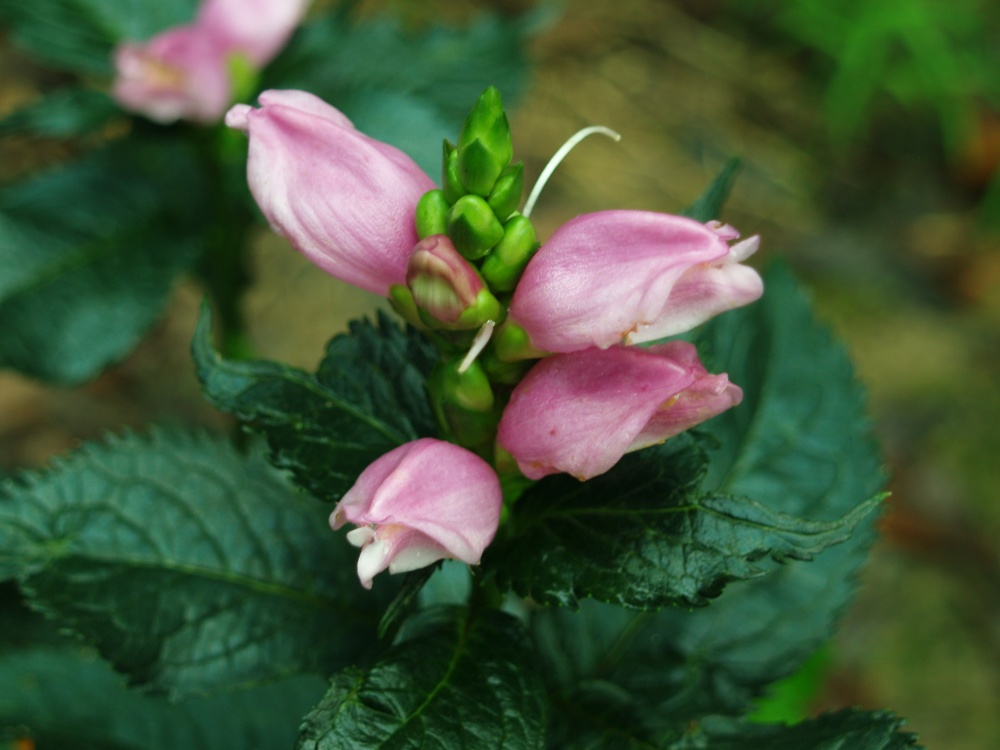There’s an obvious void in the rear garden where the multi trunked Seven Son Tree (Heptacodium miconiodes, below) was toppled over by a storm earlier in the summer. The missing tree disturbs my eye, and I’ve been desperate to replace it, but hesitant to plant another tree until cooler temperatures and more regular rainfall returns in September.
I think I might have finally settled on a replacement after much consternation. I was convinced for a short while that the splendid purple ‘Catawba’ crapemyrtle was the right tree, and it is certainly the appropriate size for the spot. Then, I saw a Korean Sweetheart Tree (Euscaphis japonica), which is similar in some ways to the Seven Son, but possibly even more beautiful. For a few days I was excited that I’d found the perfect tree, but then I couldn’t figure out how to get one, at least one of adequate size. So, I decided to buy a little one to grow along in a pot for a few years until I figure out another spot for it, and I’ve settled (at least for today) on planting a red horsechestnut (Aesculus × carnea). Eventually it will grow a bit too large for the spot, but that will be long after I’m gone, and it’s such a magnificent tree that the garden’s next owner is certain to be delighted.
When the Seven Son tree snapped at ground level it fell and damaged roses (‘Homerun’ rose doing better with more sun, above) and perennials (Agastache ‘Golden Jubilee’, also better in full sun, below) that have mostly recovered by now, but hostas and toad lilies in the suddenly sunny spot were fried. They’ve begun to rebound slightly, but won’t recover fully until spring. The horsechestnut is low branched and wide spreading, so even though it’s quite slow growing the tree will begin to provide some immediate shade.
There’s always something for the gardener to fret about in the heat of summer, and after record high temperatures in June and July more than a few plants are a bit off color or crispy around the edges. But, when these just barely more than a few plants and the open space where the Seven Son tree was planted are ignored, the garden is doing quite well. There’s not really any reason to be depressed, and certainly I’m looking forward to some new planting in September.
The Cape fuchsia (Phygelius capensis) narrowly escaped the toppling Seven Son tree, and it doesn’t seem to mind sun or partial shade, so it’s growing and blooming as if nothing happened. Cape fuchsia is not a fuchsia at all, but the flowers are somewhat similar to the less cold hardy fuchsias. I’ve planted several in the garden, one with yellow-green blooms (above) that flowers sporadically, and the other pink (below), that flowers for most of the summer (and seems undeterred by heat and drought). Both are a bit floppy with branches draped over and through neighbors, but they’re dependable bloomers through the summer. 
Last year I planted pink turtleheads (Chelone lyonii ‘Hot Lips’, below) in semi damp ground just at the start of a tiny sliver of a spring that winds its way to the back of the garden. This spot is mostly shady, with perhaps a few fleeting moments of direct sunlight, and this has proved to be an ideal setting. The turtleheads are growing robustly, with no sign of stress from heat or drought though the spring has mostly dried for the summer.
The foliage is rich and dark, the flowers delightful, and if all goes well they will seed so there will be little pink turtleheads sprouting all about this damp, shady area in the spring.
